Have you ever puzzled why bats sleep upside down or how whales do sleep without drowning?
In this world, all the animals need sleep but the sleeping pattern differs as the animal kingdom itself is varies.
How Do Mammals Sleep?
Mammals sleep to conserve energy and refuel their minds and bodies. A mammal’s sleep needs are determined by a various factors such as age, body size, environment, food and the safety of its sleeping location. The amount of sleep required by a mammal depends on whether it lives on land or at sea.
Mammals spend varying lengths of time in non-REM and REM sleep. However, all mammals tested thus far show indications of REM sleep, indicating that mammals, like humans, dream.
Mammalian sleep can be classifies as two types : Monophasic or polyphasic. Monophasic sleep refers to animals that sleep in one concentrated period of time. Humans, for example, are monophasic sleepers. Our circadian rhythms drive us to sleep for long amounts of time at night while remaining active and aware during the day.
On the other hand, Polyphasic sleepers, sleep at different times during a 24-hour cycle. Polyphasic sleep is more widespread since many animals must remain alert in the face of predators. Animals can however, sleep monophasically if stressors are minimized. For example, Mammals like marmosets sleep in trees with their families, feeling more safe and experiencing monophasic sleep.
How Do Land Mammals Sleep?
The amount of sleep needed varies from species to species, even among land mammals. It is very surprising that giraffes require only a little amount of sleep. Giraffes typically sleep for 4.6 hours every day. Although they occasionally take short naps during the day, giraffes typically sleep at night. Giraffes have relatively short sleep cycles, lasting no more than thirty-five minutes, and they can sleep both upright and in a supine position.
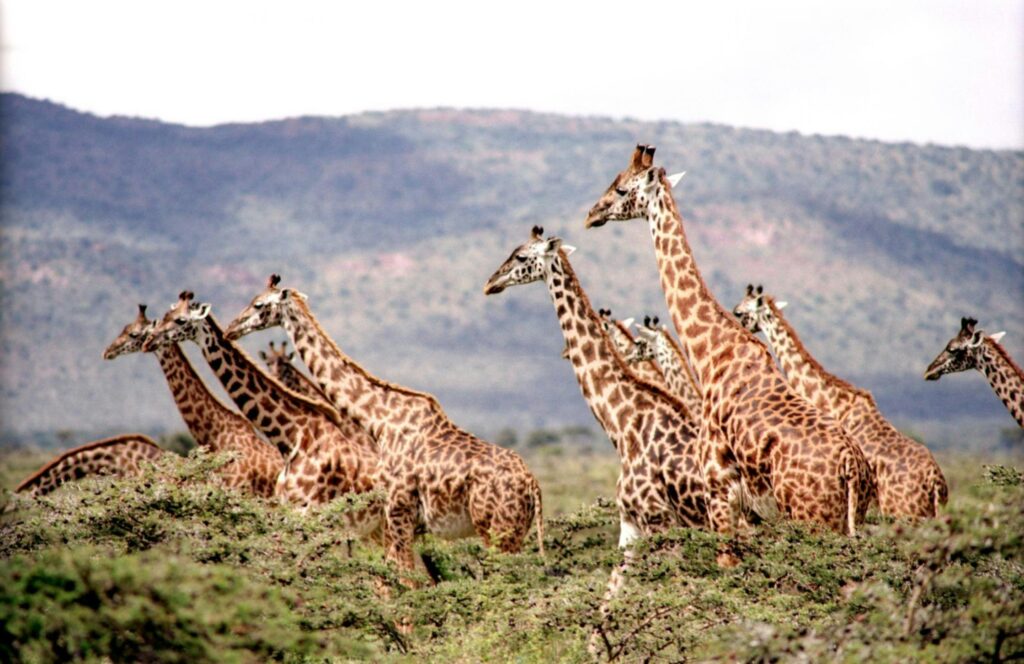
Another animals that doesn’t get much sleep is the elephant. According to some researchers, they only get two hours of sleep every day. When the elephant’s trunk stops moving, scientists can tell it is sleeping.
Like giraffes, elephants probably only get a few hours of sleep every day because of their enormous bodies and frequent grazing needs. Given how far they’ll go while awake, the risk of predators may also influence how little they sleep. Elephants have been known to travel for almost two days without taking any breaks, according to scientists.

Horses, like giraffes and elephants, sleep little and can sleep upright when they do. But they lie down as soon as they go into REM sleep.
On the other extreme, some dogs sleep for more than one-third of the day. They spend an additional twenty-one percent of the day in a relaxed state of drowsiness, prepared to take a nap at any time. The sleep duration of little brown bats is even longer, averaging around 20 hours per day. A portion of that period is spent in hibernation, or torpor.
What is mean by Torpor and Hibernation?
Many mammals and certain other animal species go into a sleep like state called hibernation. When an animals is hibernating, which can persist for months at a time, it only eats, moves, and excretes waste during brief bursts of mild wakefulness. It is a popular misperception that hibernation is a prolonged condition of sleep, however that is not entirely accurate. A condition of torpor is a better way to conceptualise hibernation.
Animals in torpor have reduced respiratory rates, body temperatures, heart rates, and metabolisms. Though more noticeable during hibernation than during regular sleep, these effects are comparable to those that occur during sleep.
In times of extreme temperature fluctuations or food scarcity, animals fall asleep to conserve energy. For instance, when their insect food supply diminishes during the colder months, bats must choose between migrating or hibernating. Some bats may remain, hibernating for a full six months after bugs return in springtime or putting themselves into torpor for a few hours on a cold day to save energy.
Although bears’ hibernation is distinct from other types of hibernation, people usually think of bears when they think of hibernation. A bear’s body temperature remains relatively constant during torpor, but it may go up to seven months without eating, drinking, urinating, or defecating much. European hedgehogs, ground squirrels, pygmy possums and the fat-tailed dwarf lemur from Madagascar are two more creatures that hibernate.
Sleeping Pattern of Marine Mammals
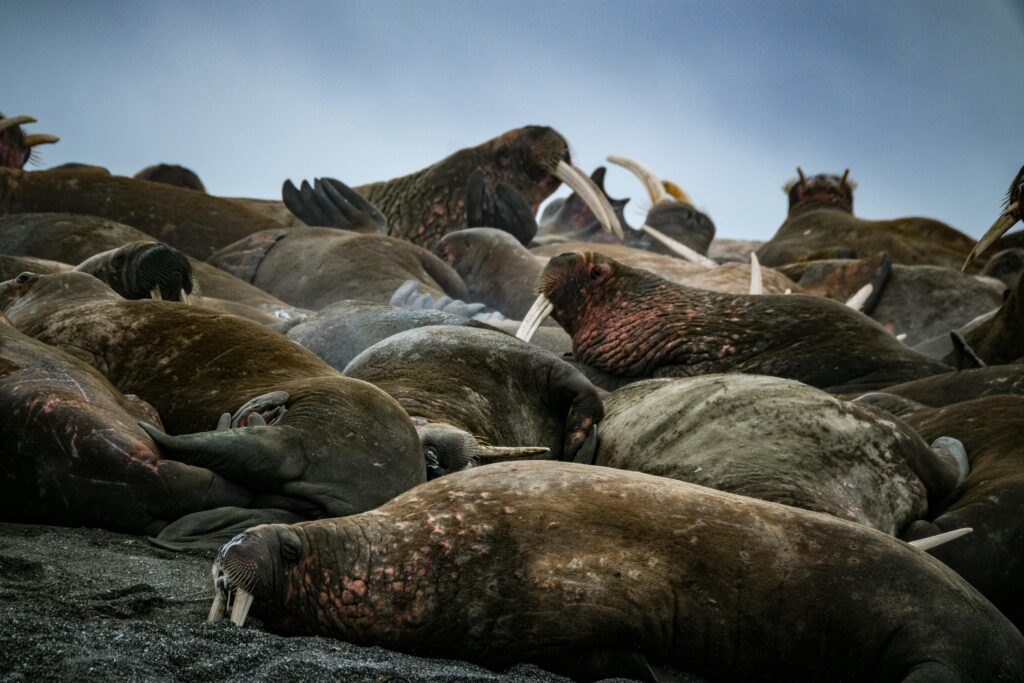
Walruses sleep for 19.4 to 20.5 hours every day. They can sleep both on land and in the water, though they tend to sleep longer on land. In the water, walruses typically sleep by floating along the surface, lying at the bottom, or leaning against an object while standing. They can even sleep on an ice floe by hooking their tusks into it. Walruses can sleep for days at a time, just like elephants. They can swim for up to Eighty four hours before they needs to be recharged.
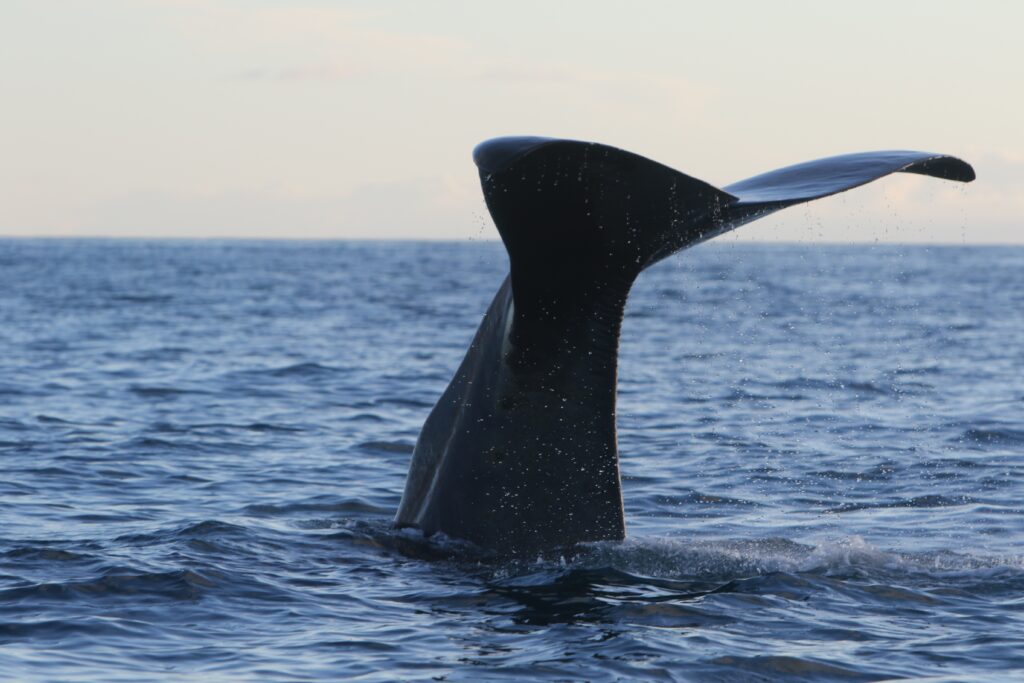
Sperm whales keeping pace with walruses, have unusual sleeping positions as well. As a matter of fact, they sleep upright. They didn’t react to a passing ship until it collided with them, allowing vigilant scientists to verify they were asleep!
Marine mammals that sleep in a unihemispheric manner include manatees, dolphins, and eared seals. Unihemispheric sleep allows these animals to benefit from the restorative effects of sleep while remaining vigilant for possible dangers because one side of the brains remains awake while the other side sleeps.
How Do Birds Sleep?
In addition, birds sleep unihemispherically, meaning that one side of their brains is asleep while the other remains awake. The only part of their brain that is closed while they sleep is the eye connected to the sleeping hemisphere.
Birds are able to defend themselves against predators by sleeping in the unihemisphere. Mallard ducks are able to sleep in a row, for instance. While the ducks in the middle doze with both eyes close, the ducks at the end are more likely to go to sleep unihemispherically, keeping their outward eye still open.

Long-distance flights are also made possible by unihemisphere sleep for migratory birds. When their wings aren’t having to flap as much while they glide, they might fall asleep. Some birds, such as the Alpine swift, have been known to fly continuously for 200 days.
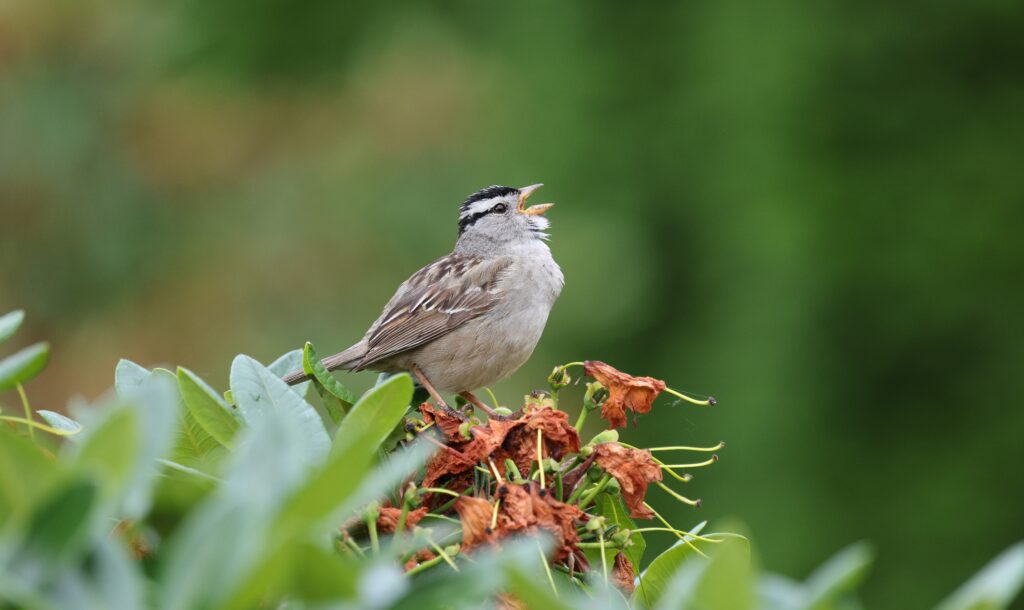
But while migrating, birds do sleep a lot less. When not migrating, for example, white-crowded sparrows only get one-third of their sleep. They will micronaps during the day and while perched to make up lost sleep. Their feet’s tendons lock into position when they perch, enabling them to sleep with minimal effort. Similar locking mechanism allow bats to sleep on their backs.
How Do Reptiles And Amphibians Sleep?
When it comes to sleep, reptiles and amphibians are two of the at least examined animals. In the past, it was thought that only mammals and birds had REM and slow-wave sleep. But new studies show that reptiles like lizards may also go through these phases of sleeping, even in cycles that last as little as 80 seconds.
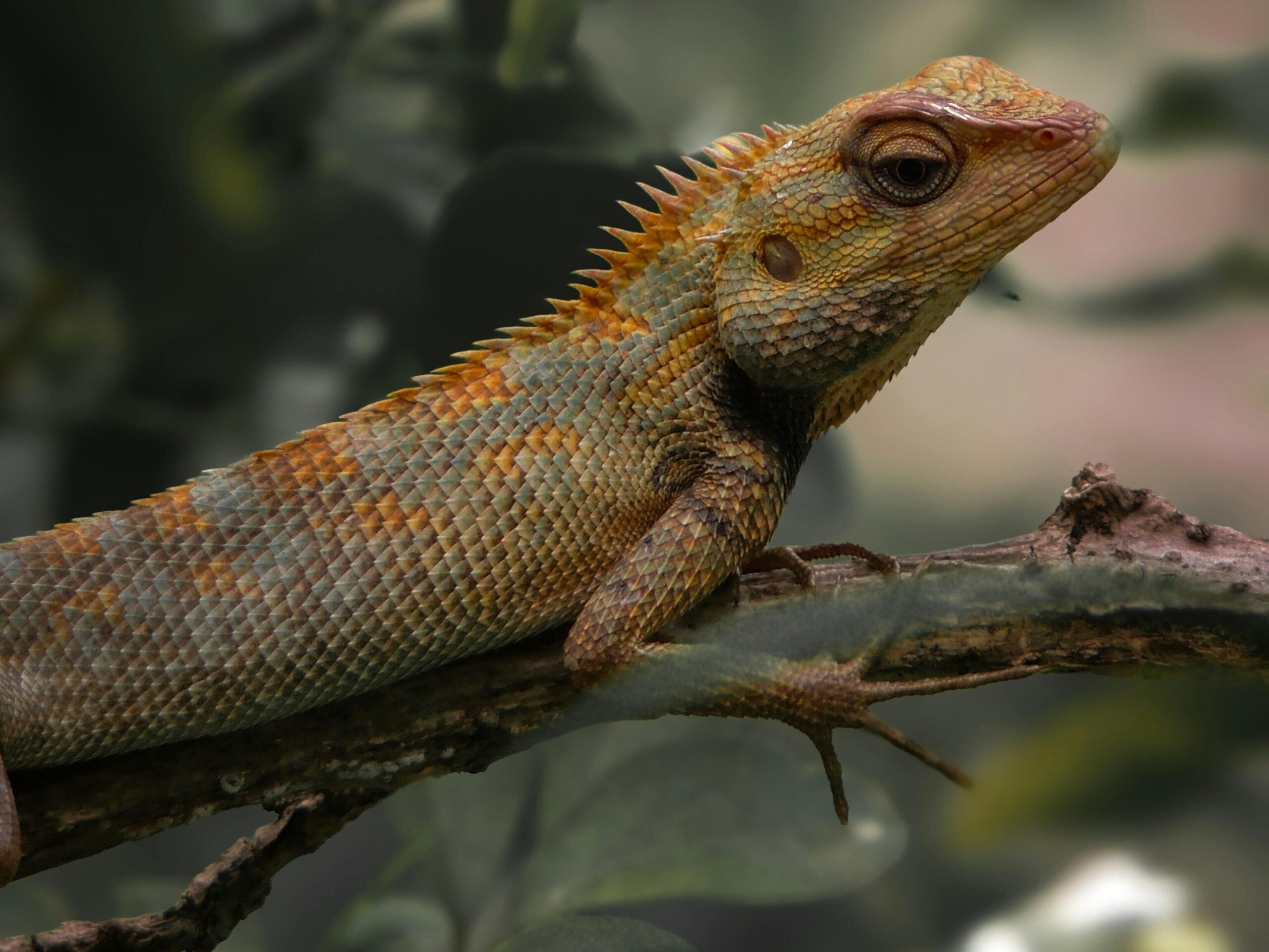
Crocodiles and some other predators sleep with one eye open so they can watch for hazards and food. Crocodiles fall asleep with only one eye open, but snakes doze with both eyes open because they don’t have eyelids. Snakes may remain asleep for a few days at times while they digest their food.
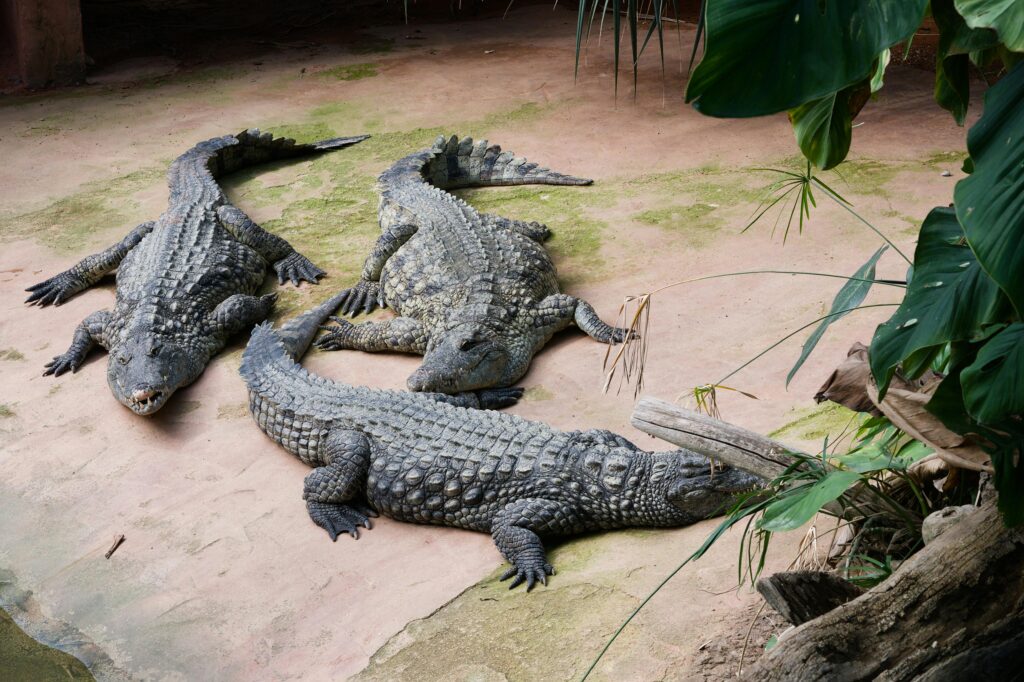
Both Western fence lizards and cottonmouth snakes brumate. Brumation is like hibernation in that it describes a state of decreased activity and metabolic processes in reptiles, usually because it’s colder and there isn’t as much food available.
Salamanders can go into brumation for up to 100 days at a time. Amphibians can also go into a condition of torpor to stay alive in dry places. Aestivation is the name for this state. Green-striped burrowing frogs dig deep into the ground during aestivation and stay there for months without moving or eating.